The CMP Review — Week of February 12
February 12, 2024
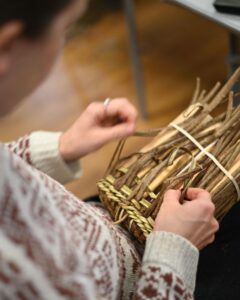
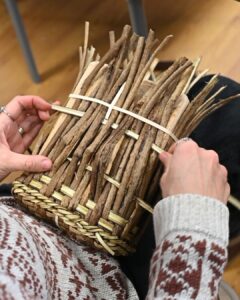
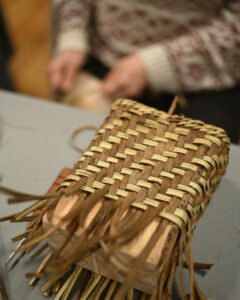
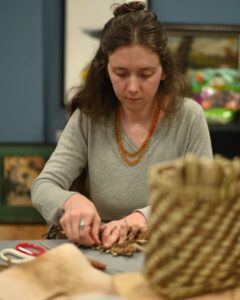
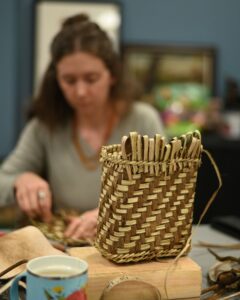


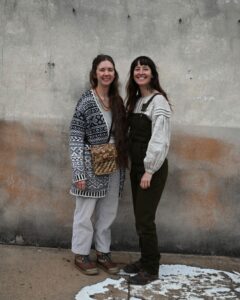
I recently took a class with @delia_of_the_greenwood where I learned to weave a satchel out of kudzu. From beginning to end of harvesting and preparing kudzu, to weaving and shaping the basket, then adding a lid and putting it all together to finish it, I was able to acquire and bring the skills home with me needed to make a functional bag out of an invasive species. In class, we also discussed other invasives that could be suitable weaving materials.
While I was away, my husband took our seven children out to the store. A lady approached and asked if we homeschool, and where was mom? My husband told her I was on a trip. ‘Oh, a work trip?’ ‘No, just an art trip to learn how to make baskets.’ ‘Oh, to sell?’ ‘No, just for fun.’ The lady was very confused as to why someone would take a trip to learn a skill. But we know better. We know that mothers are born persons too, as well as passionate learners.
“I know that all good teachers have some study each day in preparing for the next day’s work, but besides this study, pursue two or three subjects definitely on your own account. Do not think this is a selfish thing to do because the advantage does not end with yourself” (The Story of Charlotte Mason, p. 162).
@tessakeath
📷 @delia_of_the_greenwood
February 13, 2024
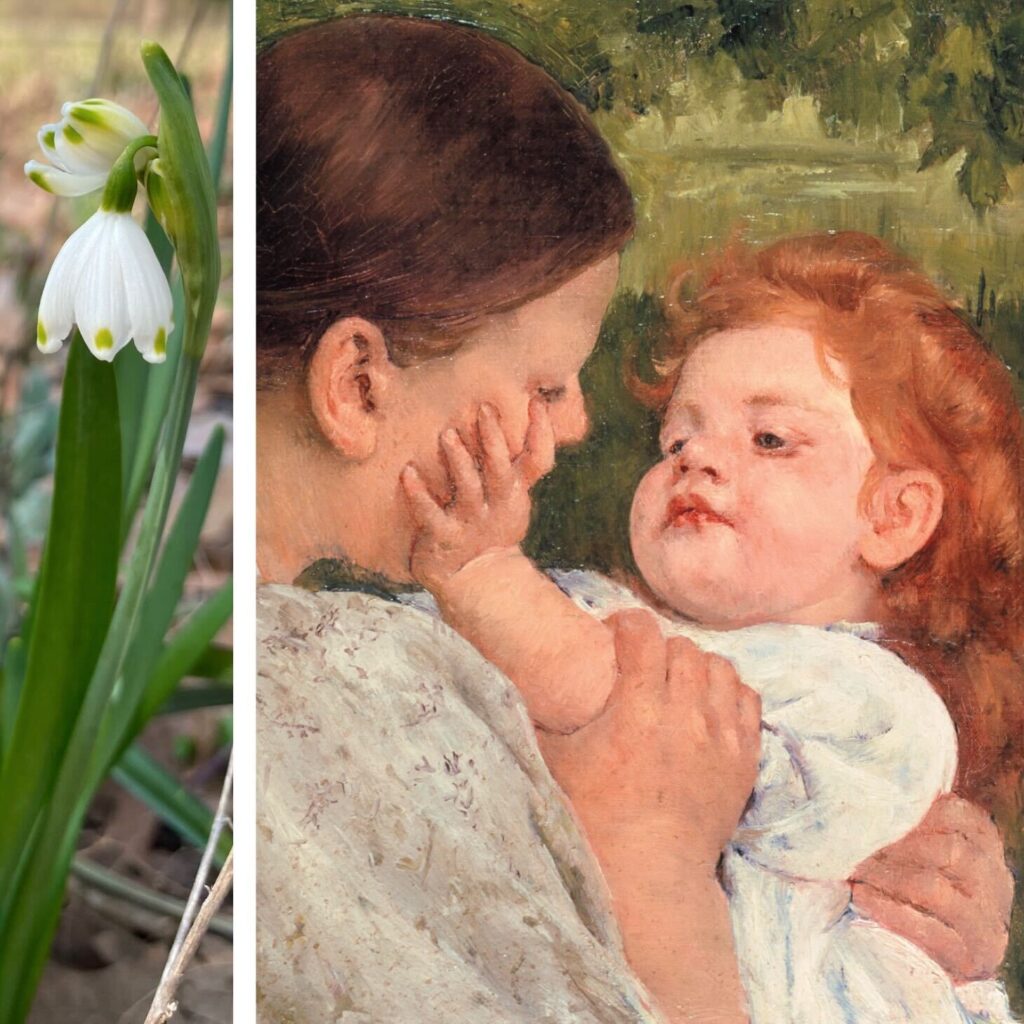
Peter’s parents believed that a child’s environment is subtle in its influences and permanent in its effects. So they took great care to ensure that their son would be immersed in a natural, aesthetic education, and that his reason would develop in harmony with his surroundings.
The walls of his room “were done in warm, cream-coloured paint and upon them Peter’s father had put the most lovely patterns of trotting and jumping horses and dancing cats and dogs and leaping lambs, a carnival of beasts.” And the floor “was of cork carpet on which Peter would put his toys.” Indeed, “there was nothing casual about the early years of Peter,” for his parents believed in the atmosphere of environment.
It sounds like something Charlotte Mason would say. And in fact she did say it, in her Towards a Philosophy of Education. The only problem is that she shared the story as an example of one of the “errors of education”! She explained: “What if parents and teachers in their zeal misread the schedule of their duties, magnified their office unduly and encroached upon the personality of children?”
It seems we are caught between Scylla and Charybdis. How do we employ atmosphere as an instrument of education without encroaching upon the personhood of our children? Read or listen as Laura Teeple tackles the question in her final article on Charlotte Mason’s paradoxical principle. Find it here.
@artmiddlekauff
February 14, 2024
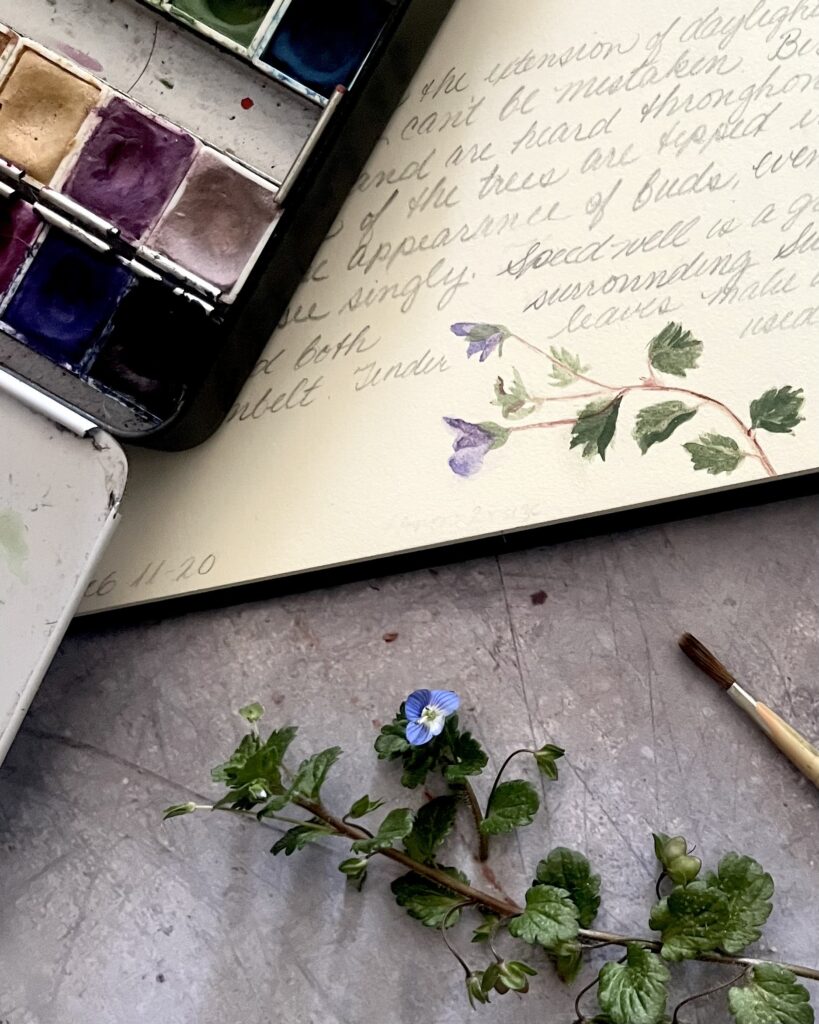
Speedwell was first painted in my nature journal three years ago and, like clockwork, the sweet little blossoms greeted me again today. While the temperature is exactly the same as it was back then, the petals on this species are decidedly more blue. It was fun to look back at what I’d written and add to the page what I’ve learned. Speedwell is non-toxic to animals & humans, and makes a fantastic tea or salad.
@rbaburina
February 15, 2024
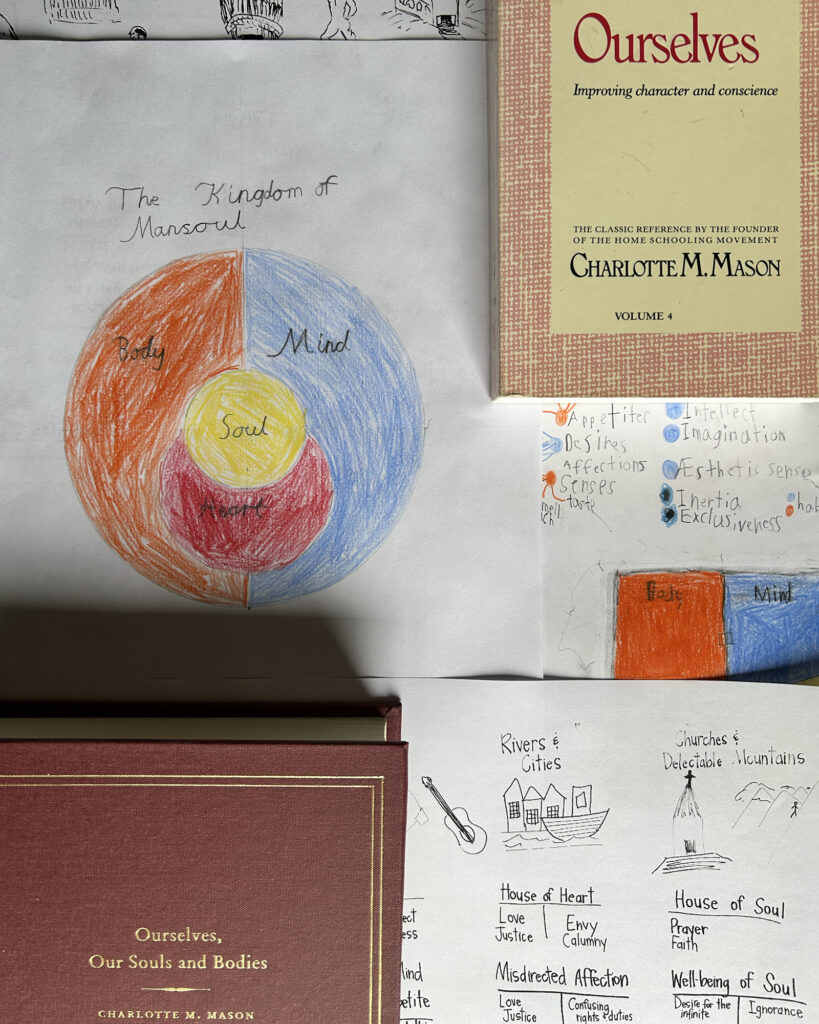
Over the years I have led several workshops with adults where we explore Charlotte Mason’s description of Mansoul in her book Ourselves and investigate how Mason’s idea of Mansoul is informed by her other theological and philosophical writings. In these workshops, we always have a large whiteboard, and the artists among us portray our findings as we go.
When it came time to read Ourselves with my teenager, however, I did not ask him to make an illustration. So I was a bit surprised when on his own initiative he began to take some notes and create a diagram on his own. All his life he has associated colors with words and sounds; thus the four houses of Mansoul naturally suggested colors and my son portrayed them in a square, one quadrant per house.
When I read Ourselves with adults in the Idyll Challenge, I always point out that Book I ends with the House of Heart. Charlotte Mason leaves us in suspense and does not explain the House of Soul until the very end of Book II. The suspense lasted even longer for my son, since we took a couple of years break between Book I and Book II.
This winter we finally reached Part III of Ourselves Book II and began our long-anticipated study of the House of Soul. I always tell adults that these seven chapters contain some of the best of all of Charlotte Mason’s writings. I could not help but express some of this same enthusiasm to my son. He was not disappointed with the first two chapters, as evidenced by his dynamic and thorough narrations.
When I returned from a walk that evening, I found that my son had redone his block diagram of Mansoul. Of course the colors were the same, because apparently words never lose their shade. But he felt compelled to show diagrammatically that the House of Soul — that place inside every heart where a person meets with God — is not merely one quadrant among four.
As I gazed at his new diagram, I reflected on Mason’s words that “in every Mansoul, the ‘Soul’ is the temple dedicate to the service of the living God.” Yes, it does seem to fit in the center of diagram. Just as it sits in the center of every human heart.
@artmiddlekauff
February 16, 2024


Have you ever seen trees completely bent over like this?
It’s quite mind blowing to see large trees decay in this way!
There is always something interesting to find out in nature, if you have eyes to see!
@antonella.f.greco
February 17, 2024
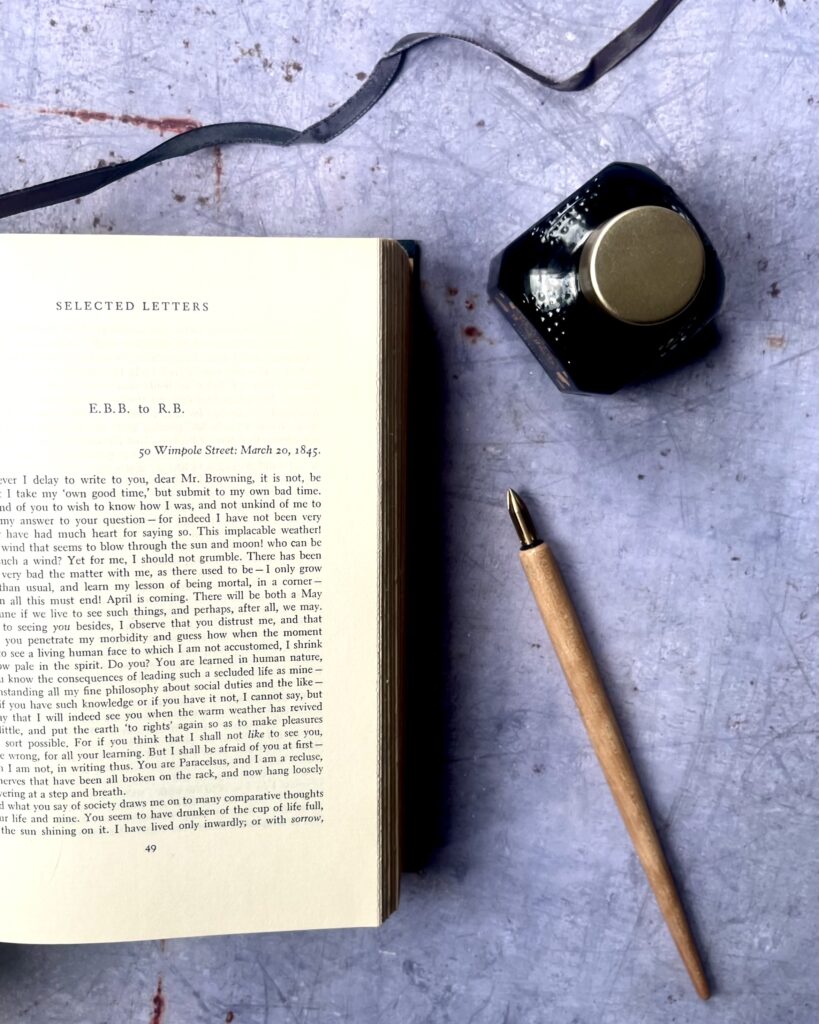
This week I delved into the correspondence between Robert Browning and Elizabeth Barrett. “I love your verses with all my heart, dear Miss Barrett,” were the first words penned by the poet to the poetess whom he’d never even met—what a beginning! The letters are achingly beautiful and surprisingly candid. Have you read them?
@rbaburina
February 18, 2024
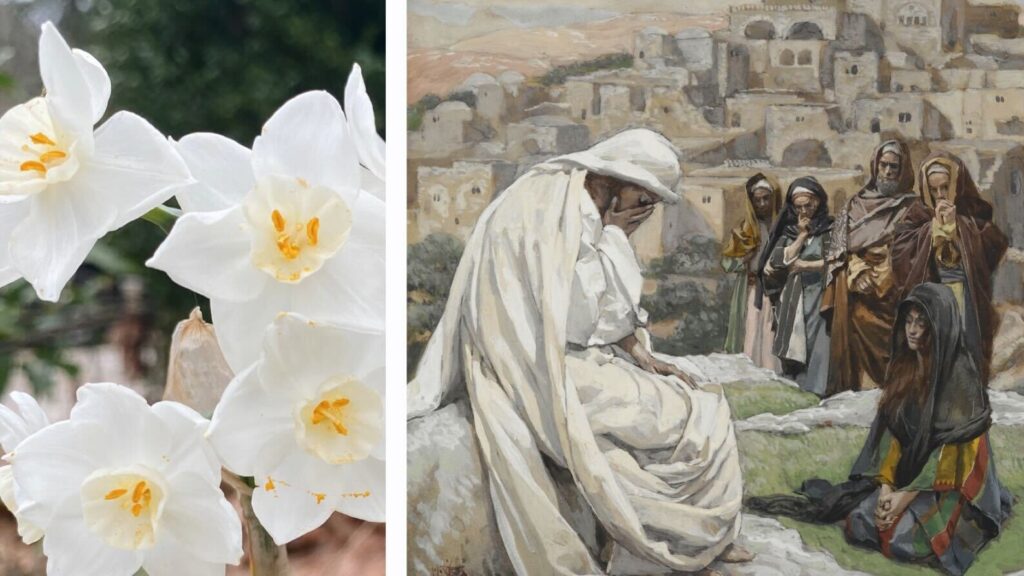
“Jewish burial did not involve embalming, as it did in Egypt,” explains Gail R. O’day. “The body [of Lazarus] was anointed with perfume and wrapped, but after four days the effect of the perfume would be rendered null by the odor of the body’s decomposition.”
Mary was weeping. Jesus was weeping. And then the crowd turned hostile. “It must be His fault,” they reasoned. If He could perform miracles of healing, couldn’t He have kept His much-beloved friend from dying?
What could Martha do? Her “assumptions about the reality and power of death govern her response to Jesus,” notes O’day. “Even her exemplary confession of faith at 11:27 could not prepare her for the fullness of Jesus’ identity and gifts.”
No one could have been prepared for what would happen next. Read or listen to Charlotte Mason’s poem about “He, who tender deals.” Find it here.
@artmiddlekauff